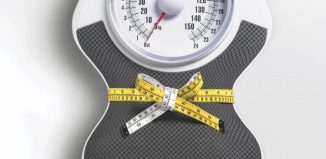The dangers of excess iron in the body
Yet another reason to avoid red meat; focus on a plant-based diet
Iron is contained in most of the foods that we eat. It is needed for proper functioning of the body and plays an integral role in such processes as DNA synthesis and adenosine triphosphate (ATP) production, which provides energy for cells (Proc Natl Acad Sci USA. 1997;94:10919–10924). It is very important to maintain iron homeostasis, or balance.
When we think of iron, we associate it with reducing fatigue and garnering energy. In fact, many of us think of the ironman triathlons — endurance and strength come to mind. If it’s good for us, then the more we get the better right? It depends on the circumstances. But for many of us, this presumption is not grounded in reality.
Iron in excess amounts is dangerous. It may contribute to a host of diseases, including diabetes, diabetic retinopathy, age-related macular degeneration (AMD), glaucoma, Parkinson’s disease and even heart disease. These diseases are perpetuated because when we have excess iron it may cause reactive oxygen species, or free radicals, which cause breakdown of DNA and tissues, ironically, the very things that iron homeostasis tends to preserve (Clin Haematol. 1985;14(1):129).
So what helps us differentiate between getting enough iron and iron overload? It is a good question and depends on the type of iron we ingest. There are two main types: heme iron and nonheme iron. Dietary heme, or blood, iron primarily comes from red meat and is easily absorbed into the gut. Dietary nonheme iron comes from other sources, such as plants and fortified foods, which are much more difficult sources to absorb. By focusing on the latter source of dietary iron, you may maintain homeostasis, since the gut tends to absorb 1-2 mg of iron, but also excretes 1-2 mg of iron through urine, feces and perspiration.
Not only does it matter what type of iron we consume, but also the population that ingests the iron. Age and gender are critical factors. Let me explain. Women of reproductive age, patients who are anemic and children may require more iron. However, iron overload is more likely to occur in men and postmenopausal women because they cannot easily rid the body of excess iron.
Let’s investigate some of the research that shows the effects of iron overload on different chronic diseases.
Impact on diabetes
In a recent meta-analysis (a group of 16 studies), results showed that both dietary heme iron and elevated iron storage (ferritin) may increase the risk of type 2 diabetes (PLoS One. 2012;7(7):e41641). When these ferritin levels were high, the risk of diabetes increased 66 percent to 129 percent. With heme iron, the group with the highest levels had a 39 percent increased risk of developing diabetes. There were over 45,000 patients in this analysis. You can easily measure ferritin with a simple blood test. Also these levels are modifiable through blood donation and avoidance of heme iron. Thus, reducing the risk of iron overload.
Diabetic retinopathy
Diabetic retinopathy is a complication of diabetes that occurs when glucose, or sugar, levels are not tightly controlled. It affects the retina, or the back of the eye. Iron excess and its free radicals can have detrimental effects on the retina (Methods Enzymol. 1990;186:1-85). This is potentially caused by oxidative stress resulting in retinal tissue damage (Rev Endocr Metab Disord. 2008;9(4):315-327).
So how is iron related to uncontrolled glucose levels? In vitro studies (preliminary lab studies) suggest that high glucose levels may perpetuate the breakdown of heme particles and subsequently raise the level of iron in the eye (Biophysical Chemistry. 2003;105:743-755). In fact, those with diabetic retinopathy tend to have iron levels that are 150 percent greater than those without the disease (Indian J Ophthalmol. 2004;52:145-148). Diets that are plant-based and, therefore, nutrient-dense are some of the most effective ways to control glucose levels and avoid diabetic retinopathy.
Age-related macular degeneration (AMD)
Continuing with the theme of retinal damage, excessive dietary iron intake may increase risk of AMD according to the Melbourne Collaborative Cohort Study (Am J Epidemiol. 2009;169(7):867-876). AMD is the number one cause of blindness for people 65 and older. People who consumed the most iron from red meat increased their risk of early AMD by 47 percent, however, due to the low incidence of advanced AMD among study participants, the results for this stage were indeterminate.
I have been frequently asked if unprocessed red meat is better than processed meat. Well, this study showed that both types of red meat were associated with an increased risk. This was a large study with over 5,000 participants ranging in age from 58 to 69.
Cardiovascular disease
Though we have made considerable headway in reducing the risk of cardiovascular disease and even deaths from these diseases, there are a number of modifiable risks that need to be addressed. One of these is iron overload. In the Japan Collaborative Cohort, results showed that men who had the highest amount of dietary iron were at a 43 percent increased risk of stroke death, compared to those who ate the least amounts. And overall increased risk of cardiovascular disease death, which includes both heart disease and stroke, was increased by 27 percent in men who consumed the most dietary iron. There were over 23,000 Japanese men who were between the ages of 40 to 79 that were involved in this study.
In conclusion, we should focus on avoiding heme iron, especially for men and postmenopausal women. Too much iron creates a plethora of free radicals that damage the body. Therefore, the best way to circumvent the increased risk of chronic diseases with iron overload is prevention. Significantly decreasing red meat consumption and donating blood on a quarterly basis, assuming that one is not anemic, may be the most effective strategies for not falling into the trap of iron overload.
Dr. Dunaief is a speaker, author and local lifestyle medicine physician focusing on the integration of medicine, nutrition, fitness and stress management. For further information, go to the website www.medicalcompassmd.com and/or consult your personal physician.
Milind Diwan
Continued from page B15
“If you measure their properties in this far-away detector, there will be differences,” Diwan predicts. “I suspect those differences will be quite large and … can be directly linked to the way the universe evolved in its first few microseconds” when antimatter was annihilated.
“We have been struggling to understand this miraculous event,” Diwan explained. “This is one of the key problems in all of science.”
While scientists plan to send the neutrinos on a long journey through the Earth, the researchers themselves are expecting their own long trek.
Based on the current plan, the LBNE will start producing data in 2022. By then, would-be scientists who are planning to graduate from high school this year may contribute to the research.
While that might seem like a slow build for a long range project, there are competitive time pressures.
“Japanese physicists want to perform a similar experiment with a shorter distance and Europeans want to perform a bigger experiment with almost the same experimental features,” Diwan explained. “At this point, there is agreement that in terms of planning, we are ahead of them.”
A resident of Port Jefferson Station, Diwan and his wife Sucheta, an engineer at Hauppauge-based Parker Hannifin, have a 14-year old daughter, Renuka, and a 10-year old son, Yashodhan.
His wife’s job is “much more important than mine,” he offers. Her company makes fuel gauges for jumbo jets.
As for his work, Diwan has been in the physics department at BNL since 1994. He is eager to see the LBNE project through.
“I feel very fortunate that I am working on a question that is important,” he offered. “It is extraordinary that we have the tools to actually perform this experiment.”






